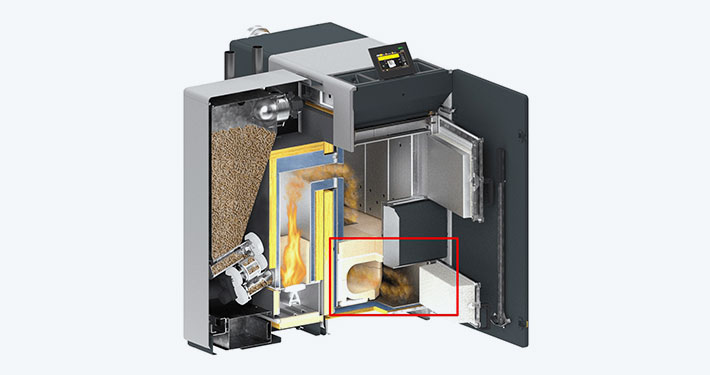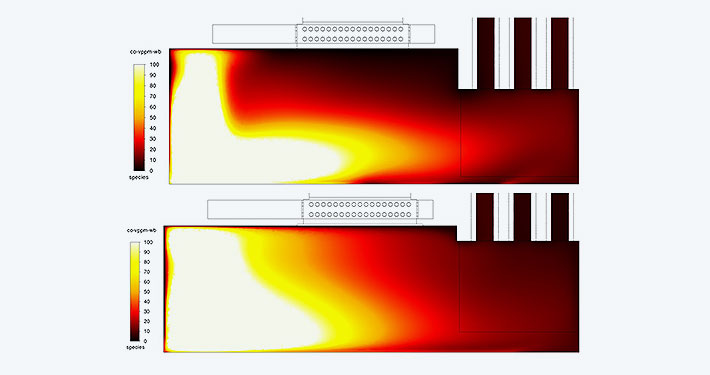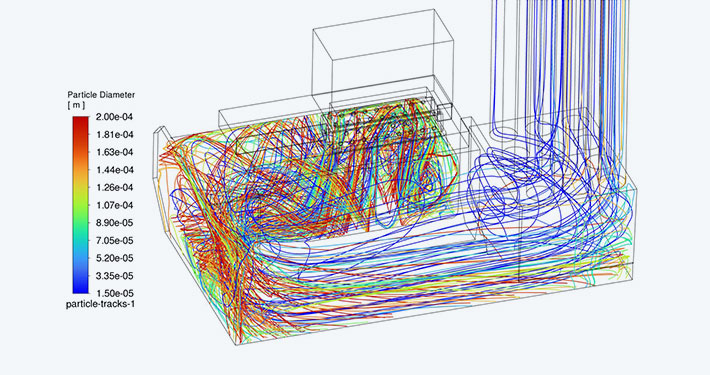Improving the performance of a biomass heating system through combustion simulations and parameter studies
Regarding the efficiency of a heating system, engineers use the Greek letter η, which means “eta”. Maximizing this using renewable resources is both the aim and ambition of ETA Heiztechnik GmbH in Upper Austria, which is why the possibilities of simulation are exploited in product development.
Summary
Task
Energy efficiency and environmental compatibility are decisive characteristics in heating technology. Creating prototypes and performing complex tests on the test bench is often a lengthy and expensive process. That's why manufacturers like ETA, who specialize in the use of biomass, must continue to develop their products, such as log boilers, in a dynamic and cost-effective manner in order to remain successful.
Solution
At ETA, digitalized development methods have proven to be a strong alternative to the traditional approach. For example, combustion simulations in the boiler combustion chamber were used to analyze the presumed optimization potential for CO emissions and the buildup of fly ash. This made it possible to uncover correlations and increase the efficiency of the processes.
Customer benefits
ETA is able to use simulations to analyze key influencing factors without the costly and time-consuming construction of prototypes. This example shows the CO concentration in connection with burnout and wall shear stress, which promotes the desired dust particle deposition. In addition, conflicting goals of various factors were identified and resolved using parameter studies.
Project Details
Task
When scaling up eSH log boilers with the integrated optional E-Filter to an additional size, the aim was also to improve their energy efficiency and environmental compatibility. Since this was a matter of further developing an established product, the goal was to take a quick and cost-efficient approach, and simulations were the method of choice.
The eSH20 has a thermal output of 20kW and requires very little installation space. Automatic ignition, heating water pump, return flow increase and heat quantity measurement are already installed in the boiler as standard. The heart of the boiler is the high-performance combustion chamber. A great deal of development work has been invested in its optimization.
To achieve the goal of complete combustion, the flue gas must be mixed as well as possible at high temperatures in the secondary combustion chamber. Despite high turbulence, the coarse dust should also be deposited at the bottom of the boiler after the combustion chamber exit. This makes it easy to clean manually, so that the E-Filter is cleared of the large particles.

Customer Benefit
Using simulations, ETA engineers identified an optimal constellation that would have taken more than twice as long using a traditional approach of analytics and prototype testing. At the same time, costs for this were reduced by about 20%. Without simulation, it would have been virtually impossible to obtain results of comparable significance, because simulation enables a detailed analysis of areas that cannot be achieved the test bench.
The continuous improvement of energy efficiency is crucial to success, especially in heating technology, and is therefore a must in order to survive in the market. The key to optimization lies increasingly in analyzing supposed “little things”.
In addition to time and cost benefits, this is another strength of digital development tools such as simulation: They allow us to focus on the details. The effects of changes are not isolated, but rather become visible in the overall context of the product.
Having such tools and competencies in-house makes a company innovative, responsive, and independent. ETA Heiztechnik GmbH has achieved this with the support of CADFEM Austria GmbH. But the journey is not over yet. Using the CADFEM Learning Subscription, the company’s own simulation competences continue to be expanded.

Solution
The combustion simulations were carried out using Ansys Fluent. In addition, parameter studies were implemented with Ansys Discovery using a wide range of geometry variants. This enabled numerous combustion chamber geometries to be evaluated and trends to be determined.
During this process, it became apparent that the two previously defined variables have a conflict of objectives.
The initial geometry shows an elongated CO plume in the area after the combustion chamber.
After several variations, this plume could be compressed, but this significantly increased the area of high wall shear stresses, which indicates poor dust deposition. After further adaptations of the geometry, an optimum was finally found in which the CO concentration was homogeneous over the height of the radiation channel and the wall shear stresses were small enough to allow dust to settle over large areas of the floor.

Cover Image: © ETA




